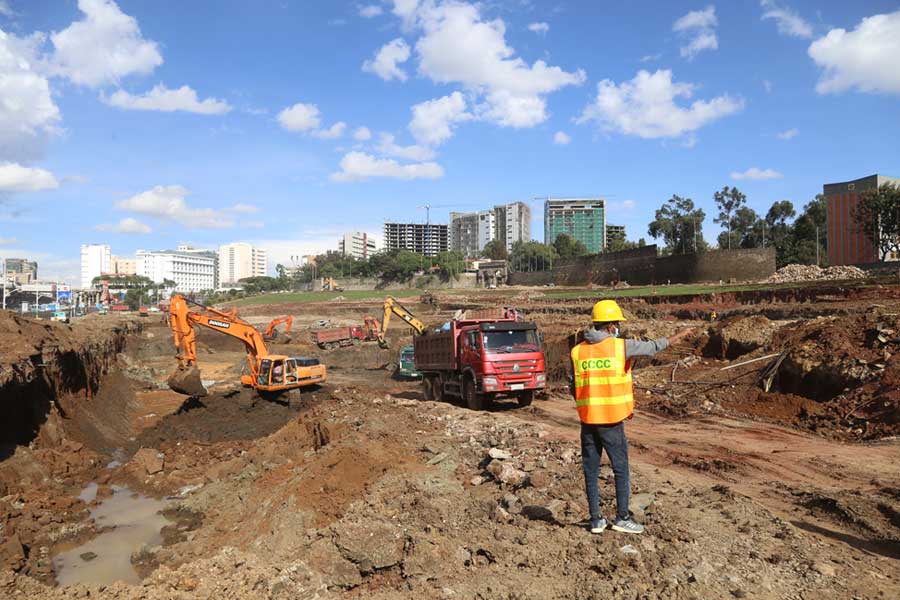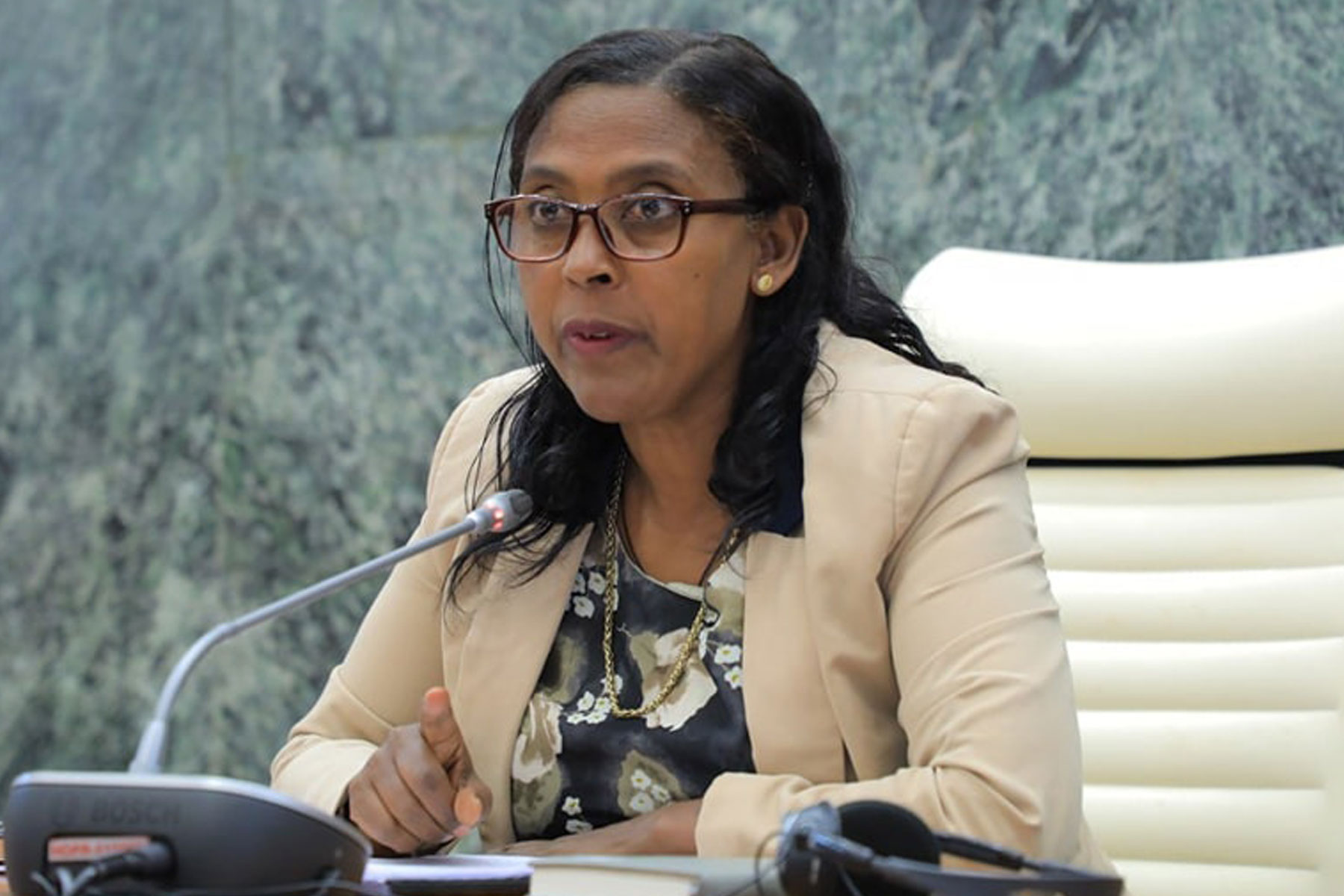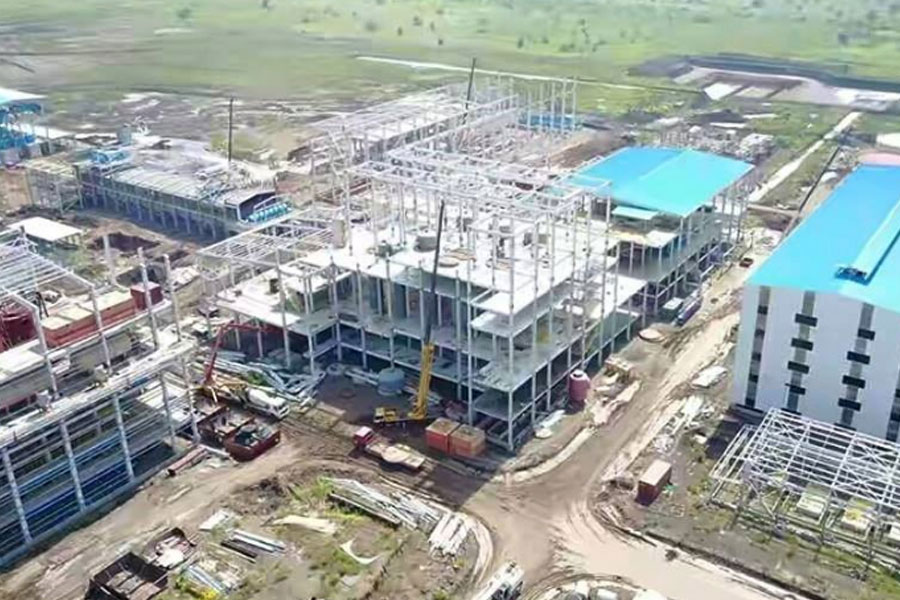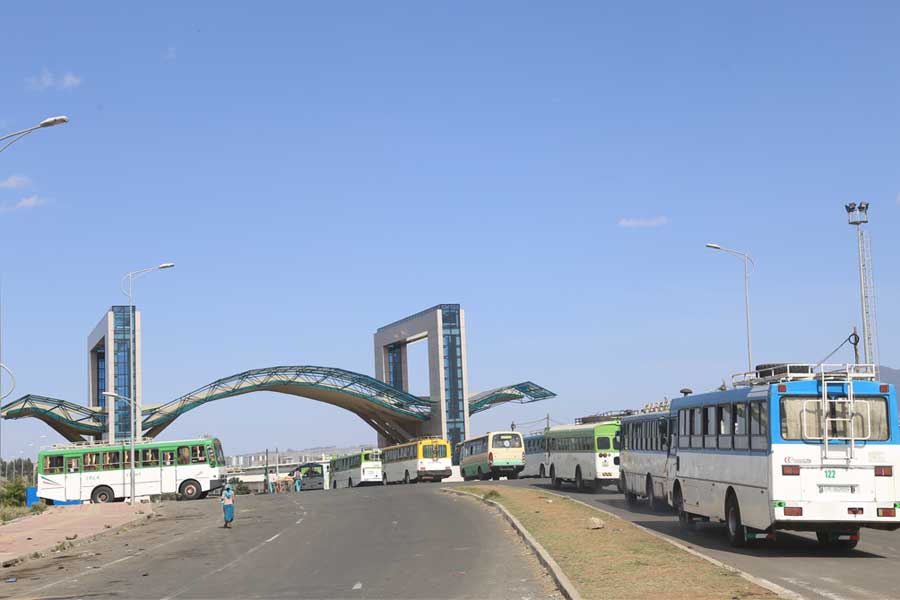
Covid-19 | Jun 12,2021
The crowded Sebategna area near the Autobis Tera bus station is filled with eventful scenery of traders, drivers and travellers coupled with piles of trash on the sides of the street. Children that migrated from rural areas scramble to make a living selling peanuts, hauling goods and picking leftovers from the vegetable market nearby. The stench of wet trash does not seem to bother them as they toil around to make ends meet and survive the day. At night some find themselves sleeping on the streets while those that manage to earn money share small rooms with as many as six people.
It has been two months since Melkamu Gasha made his way from Arba Minch town in Southern Regional State to the capital in search of greener pastures. The 18-year-old wanders the streets of the capital in search of work during the day and pursues opportunities as a daily labourer, a scrape living. His five roommates also hang around the area. All are school dropouts from the same town, who fled their homes due to economic constraints.
"We heard there was work in Addis," Melkamu told Fortune.
At night they share a five-metre square room around Shiro Meda paying 1,800 Br monthly rent. Although destitute, they do not intend on returning to their hometown empty-handed, putting a burden on their families.
"I am not going back," Melkamu said.
A study on rural-to-urban migration conducted by the CHR Michelsen Institute (CMI) in 2014 suggested that at least one-third of villages in the Southern regions had a member of the household migrate to urban areas particularly Addis Abeba and Hawassa cities. Close to 21pc of these migrants are under the age of 18 and engaging in the informal sectors of the economy.
Atlaw Alemu (PhD), an economics lecturer at Addis Abeba University, believes the nature of migration in Ethiopia has changed course. He said people used to flee from rural areas then, to escape poverty but now, it is to save their lives. According to Atlaw, migration is no longer just from rural to urban, rather from one regional state to the other.
"It is no longer economic, but a matter of survival," he told Fortune.
People fleeing by thousands to the capital is not the least bit surprising to the economist as the proliferation of ethnic conflicts in several parts trumps economic pressures. Considerations of statistical rigour in terms of planning are secondary to a country walking on the brink of disaster year-round, according to the expert.
A 27-year-old man Mahder Mebratu arrived in the capital a month ago from the war-stricken town of Adigrat in Tigray Regional State. He was an employee of an Agro-Industry with a monthly income of 7,000 Br before the war broke out.
"Those days are long gone," he reminisced as the company he used to work for was decimated during the war.
The Hydraulics Engineering graduate says he will do anything to make a living at this point. He lives with his uncle in a room he shares with two cousins while he seeks work. Even though employment prospects appear slim and life is expensive in the capital, the aura of relative safety Mahder is all too sweet to abandon anytime soon. He feels lucky to have survived the war and make it through the treacherous path to the capital 600km away.
Under the Norwegian Refugee Council (NRC), the International Displacement Monitoring Center (IDMC) has tracked internal displacement data since 1998. On its annual report in 2021, 5.1 million new internal displacements in Ethiopia were registered, the highest number of newly displaced people for a single year in a country.
The economic constraints and internal migrations resulted in Addis Abeba being overpopulated. The last national census was conducted 16 years ago, with the census commission at the time reporting 2.7 million residents. Since then, the country has experienced several socioeconomic transformations in the time span that could contribute to extreme changes in the demography.
The protracted war, food insecurity, inter-tribal conflicts and spiked-up unemployment coupled with rapidly declining arable land are some of the reasons that lead to the influx of copious people in urban areas.
The casted shadow can be observed in several aspects of Addis Abeba's socioeconomic makeup with decision-makers in the administrative apparatus basing the population size data on information from the Ethiopian Statistical Services (ESS). The data projects the capital's population to be 5.1 million by 2037.
The population estimate of the capital for the year 2022 stood at 3.8 million people, a per capita of 263.15 Br. The figure suggests the current population estimation has an increase of 1.1 million people from the last count over 15 years ago.
The calculation factors in birth and death rates and "inter-regional" migration, according to Hailmariam Teklu, head of the population studies department at ESS. He expects the actual figure to be a little north of the estimations they provide to respective executing bodies.
Despite remaining in the dark about how many people exactly live in the capital, Parliamentarians allocated 100 billion Br in the fiscal year.
"Our budget can't account for the actual migration," said Mebratu Gebre, budget director at Finance Bureau of the City Administration.
He recognized the importance of conducting a census to determine the exact number of residents in Addis Abeba. Mebratu conceded the unknown number of people migrating to the capital strains the budget and finds that the inexactitude of the number of people who could potentially use infrastructures such as hospitals, schools and sewage stretches the funds thin.
The Ethiopian constitution explicitly states that a national census should be conducted every 10 years. The one planned for 2019 would have been the fourth in the nation's modern history and had a budget of 3.5 billion Br and a 200,000 workforce.
The former Central Statistics Agency now rebranded as ESS received 180,000 electronic tablets five years ago to facilitate electronic assistance of the national census after Lenovo and Huawei won an international bid worth 665 million Br. After repeated postponements of the census, the Agency had to surrender its stock of brand-new tablets to several government bureaus in need of equipment.
Safi Gemeda, communication directorate for ESS said the decision was made by the Ministry of Finance as it was not being put to use. He also uses an electronic tablet for his communication needs.
Data from UNICEF indicates that about 80pc of communicable diseases in Ethiopia are transmitted by the lack of sanitation and clean water. The WHO urban and territorial planning integrating health sourcebook of 2023 highlights the importance of creating infrastructure that prevents the cultivation of diseases that arise from lack of sanitation.
Intestinal nematodes, diarrheal diseases and schistosomiasis that arise from poor water management are mentioned as priority areas with close to a million people dying globally due to unhealthy living conditions. Enforcement of water standards was listed as the first dimension of planning for a health-integrated urban planning scheme.
The Addis Abeba Health Bureau headed by Yohannes Chala (MD) has seen a budget growth of 150pc for the year at 6.12 billion Br excluding the construction of health facilities. According to him, the construction cost for the expansion of Zewditu Hospital alone is racking up to 1.16 billion Br, nearing the target of 15pc allocations to the health sector. Yohannes recognizes that there is a significant inflow of migrants in the city but claims the city still meets the minimum standards set forth by the WHO.
Taddese Kebebew, head of housing development & administration at the Ministry of Urban Planning & Infrastructure, recognizes the importance of a national census but does not expect it to account for a great deal of variance from the reality on the ground. All population data the Ministry uses comes from the ESS, an increased rate of 5.4pc from the census data of 16 years ago, according to Tadesse.
"It is better than nothing," he said.
Planning without considering the population size does not seem to work long-term.
The urban planning expert with a decade of experience, Mahder Gebremedhin, says the capital does not meet international standards even per the modest estimates of ESS in sectors such as sanitation, health and housing. The expert reasoned any form of long-term planning has to factor in the role of population size.
"How can you calculate water supply without knowing how many people will need it?" enquired Mahider.
Case in point, the Addis Abeba Water & Sewage Authority (AAWSA) claimed to have provided 94 million cubic meters in its six-month report last month. Using population data from the ESS, this means an average of 23ltr per person in six months and 0.12ltr of water in a day.
An educational think tank focused on Africa, weASPiRE released a report last month that put the water supply of Addis Abeba at 40pc. The report highlighted that even with the combination of underground and surface water the 0.48 million cubic metre per day production does not even meet half the water demand of the capital. This has led most districts within the capital to have running water only during a certain portion of the week.
The implications of predicting budgetary allocation on data collected nearly two decades ago coupled with poor vital registration accounts for the visible population pressure.
The effects of uncontrolled external factors have their own implication for faulty statistics, said Bedlu Ejegu (PhD), assistant professor heading the statistics department at Addis Abeba University.
"The longer the time span the less accurate projections become," he told Fortune.
He also reasoned the absence of coordinated vital events registration could sway population data to misrepresent the real on-ground circumstance. The habit of reporting births and deaths to the government is not up to speed, according to Bedlu.
PUBLISHED ON
Feb 11,2023 [ VOL
23 , NO
1189]

Covid-19 | Jun 12,2021

My Opinion | Jul 10,2021

Agenda | May 09,2020

Fortune News | Apr 13,2024

Radar | Nov 09,2019

Fortune News | Sep 18,2021

Fortune News | Oct 09,2021

Commentaries | Jul 07,2024

Verbatim | Dec 30,2023

Fortune News | Jun 27,2020

Dec 22 , 2024 . By TIZITA SHEWAFERAW
Charged with transforming colossal state-owned enterprises into modern and competitiv...

Aug 18 , 2024 . By AKSAH ITALO
Although predictable Yonas Zerihun's job in the ride-hailing service is not immune to...

Jul 28 , 2024 . By TIZITA SHEWAFERAW
Unhabitual, perhaps too many, Samuel Gebreyohannes, 38, used to occasionally enjoy a couple of beers at breakfast. However, he recently swit...

Jul 13 , 2024 . By AKSAH ITALO
Investors who rely on tractors, trucks, and field vehicles for commuting, transporting commodities, and f...

Oct 11 , 2025
Ladislas Farago, a roving Associated Press (AP) correspondent, arrived in Ethiopia in...

Oct 4 , 2025
Eyob Tekalegn (PhD) had been in the Governor's chair for only weeks when, on Septembe...

Sep 27 , 2025
Four years into an experiment with “shock therapy” in education, the national moo...

Sep 20 , 2025
Getachew Reda's return to the national stage was always going to stir attention. Once...